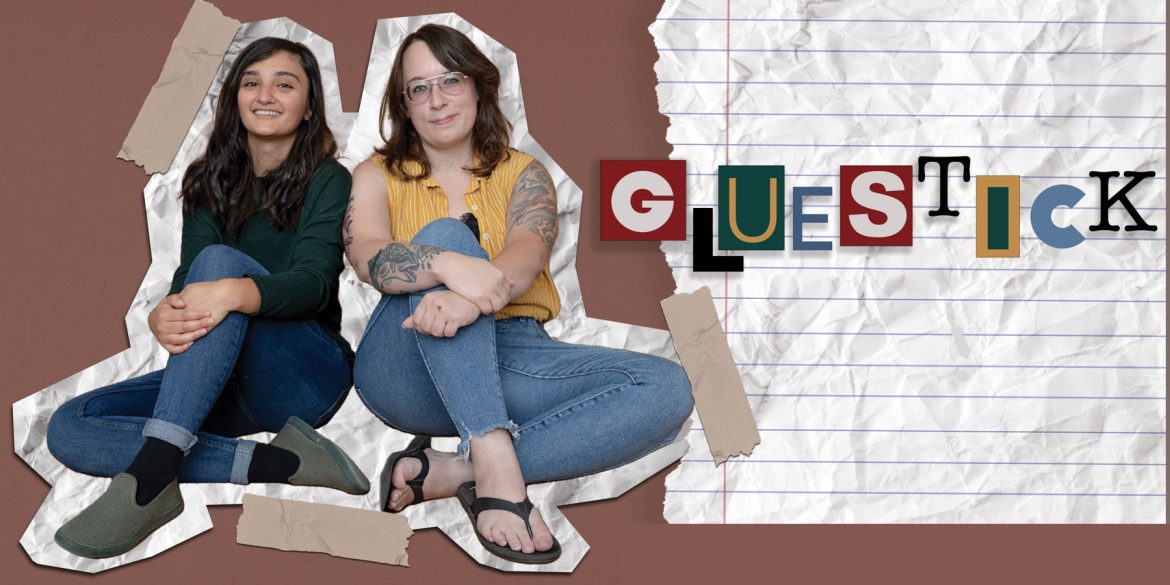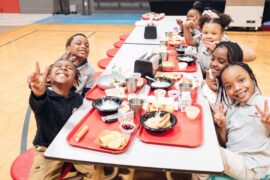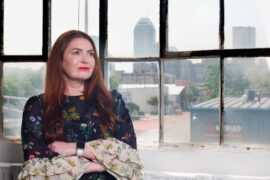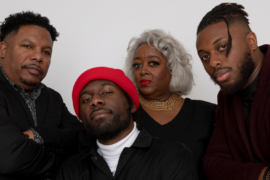Kelsey Simpson and Maria Iqbal work together to run Gluestick, an art collective focused on zines and paper crafts. Gluestick often hosts workshops to educate people about zine making and also puts together an annual festival for people to buy and trade their work. We sat down to talk to them about Gluestick and zines.
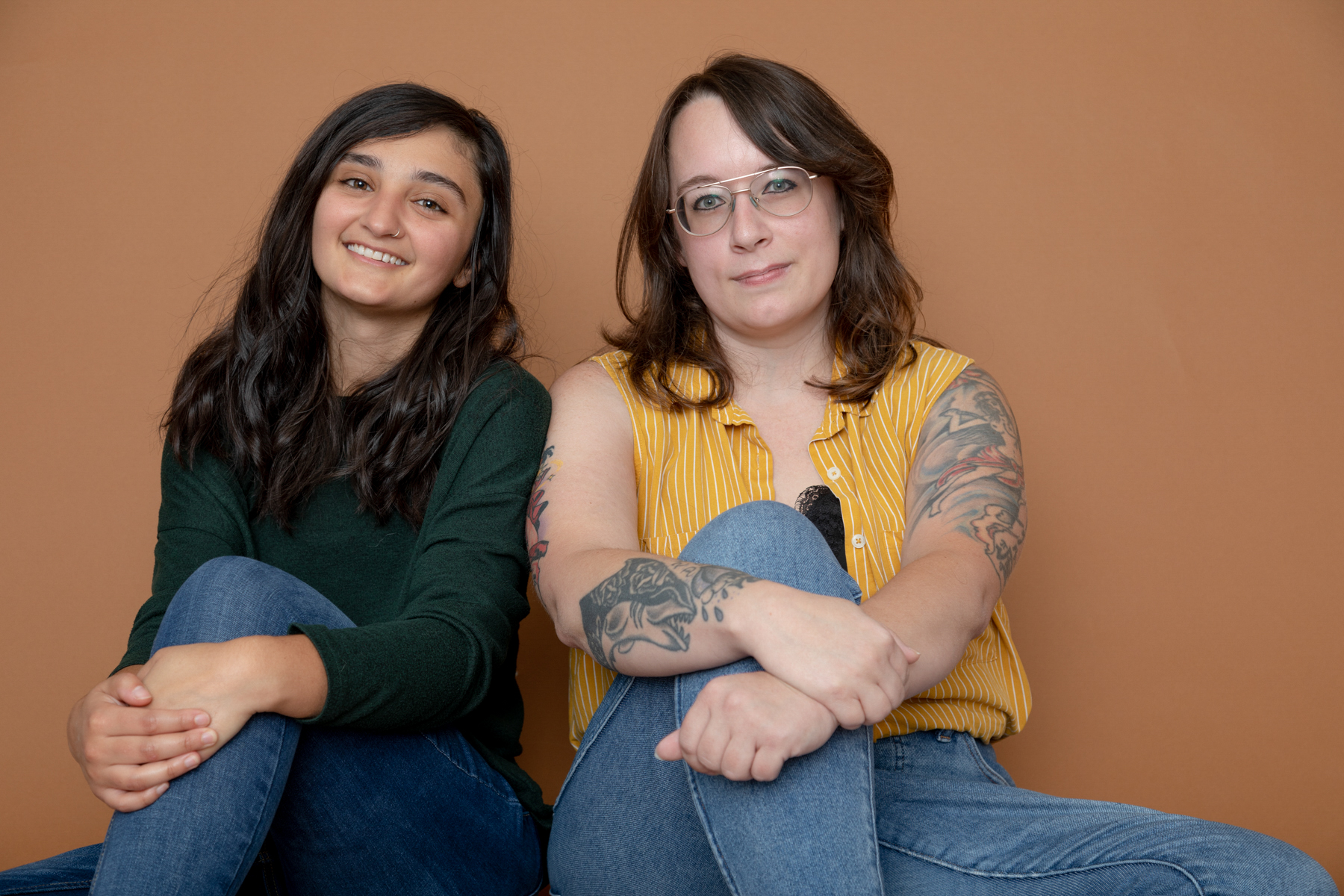
Gab Peabody: What is a zine and how do you make one?
Kelsey Simpson: Zine is short for magazine. A zine is basically a handmade booklet, very similar to a magazine, but the idea with a zine is that you can print it without a lot of money. You can print it on your own; you might be able to just go to a library and use their copy machine to make a zine rather than go through a publisher.
GP: When were you first introduced to zines?
KS: This is really silly, but when I was twelve I was posting in an AOL kids punk forum of all things. Someone was looking for another twelve year old girl to join her band and it turned out she lived in Anderson, Indiana. When we met up she was like, “Hey, have you ever heard of zines? I want to do one.” I was like, “No, but, let’s do it.” Before that I had made a neighborhood newsletter and other little booklets, but I didn’t know the word zine until I met her.
Maria Iqbal: I knew them by seeing them around, but I didn’t exactly have a word for them, I just knew what they looked like. It wasn’t until I met Kelsey that I learned the word zine. At that time Kelsey was doing the first Gluestick event. We met through mutual friends. That’s how I got into it. I used to make my own little booklets when I was younger. It’s that same concept of something very cheap that can be folded down or stapled together.
GP: What topics do you like to include in your zines, why?
KS: Personally, I do collage poetry. Sometimes I’ll put my drawings in there. I’ve done a little bit of comics, but I’m not great at comics, so I backed off of that. For Gluestick, we pretty much did a poetry theme. We did a Halloween zine once a year for a little bit. The first Gluestick we did a zine about Indiana. People did one page about what they loved about Indiana.
MI: I am an illustrator by trade, so I tend to put drawings in my zines, because it’s what I’m used to doing. I tried to do poetry, but it was not good poetry. Then I kept the theme of not good poetry for my zines, and I just fill my zines with whatever, like drawings. The majority of them are just doodles and sketches that I’ve had that I don’t normally share. It’s a good way to get ideas out.
GP: What is Gluestick?
KS: Gluestick itself is a collective. Through a collective group of people, we do a lot of different events. Our main event is an annual zine festival, which focuses on zines, but we allow comic creators, printmakers, pretty much anybody if they show an interest in being there. It primarily has to do with paper. We also do small time concerts. For a period of time we incorporated music into Gluestick Zine Fest. This year we had two DJs and a beat maker which was really cool. We facilitate workshops with Chromatic. Chromatic Collective is like an art sister group, we do everything with them and they allow us to use their space. We facilitate a poetry night, which we then make a zine of people’s poetry from that night and then we do a monthly zine making workshop. Gluestick represents people getting together and having fun and doing stuff with paper.
MI: I would say we’re pretty focused on being as inclusive as possible. At least for me, I always felt like Gluestick was a very inclusive art collective, especially in a time in my life where I felt like the arts were very exclusive. Sometimes it may feel like you have to be interested in a very niche thing to be a part of a group, whereas with Gluestick we don’t have that, besides paper arts of course. It doesn’t matter if you went to art school. It doesn’t matter if you hate drawing, or writing. It’s for writers and people who like drawing all alike.
KS: I think that’s the number one thing—it’s supposed to be accessible to everyone. There are enough collectives and organizations that are gatekeeping or are out of reach to people. Everybody can come to Gluestick, your grandma can come to Gluestick, your six year old brother can come to Gluestick.
GP: Why do you think it’s important to teach others about zines?
KS: Before COVID, I taught a zine-making workshop at eighteen different library branches, which was crazy. It encompassed a summer reading program, and it was super fun. It’s important to teach people how to do things, because it is probably the most accessible art form. You could make a zine and never take it to a copy machine, and it’s still a zine. As long as you have paper and supplies, you can do anything. Part of what I did at the library was I showed teens and kids how to fold one piece of paper into a mini-zine. It’s super easy. It’s like a simple origami project that anyone can do. I’ve taught it to six year olds and I’ve taught it to sixty year olds. Somebody needs to hold something physical in their hands that they know they made, and that’s why it’s important. Sometimes we forget that you can do that. Especially with the way digital stuff is now.
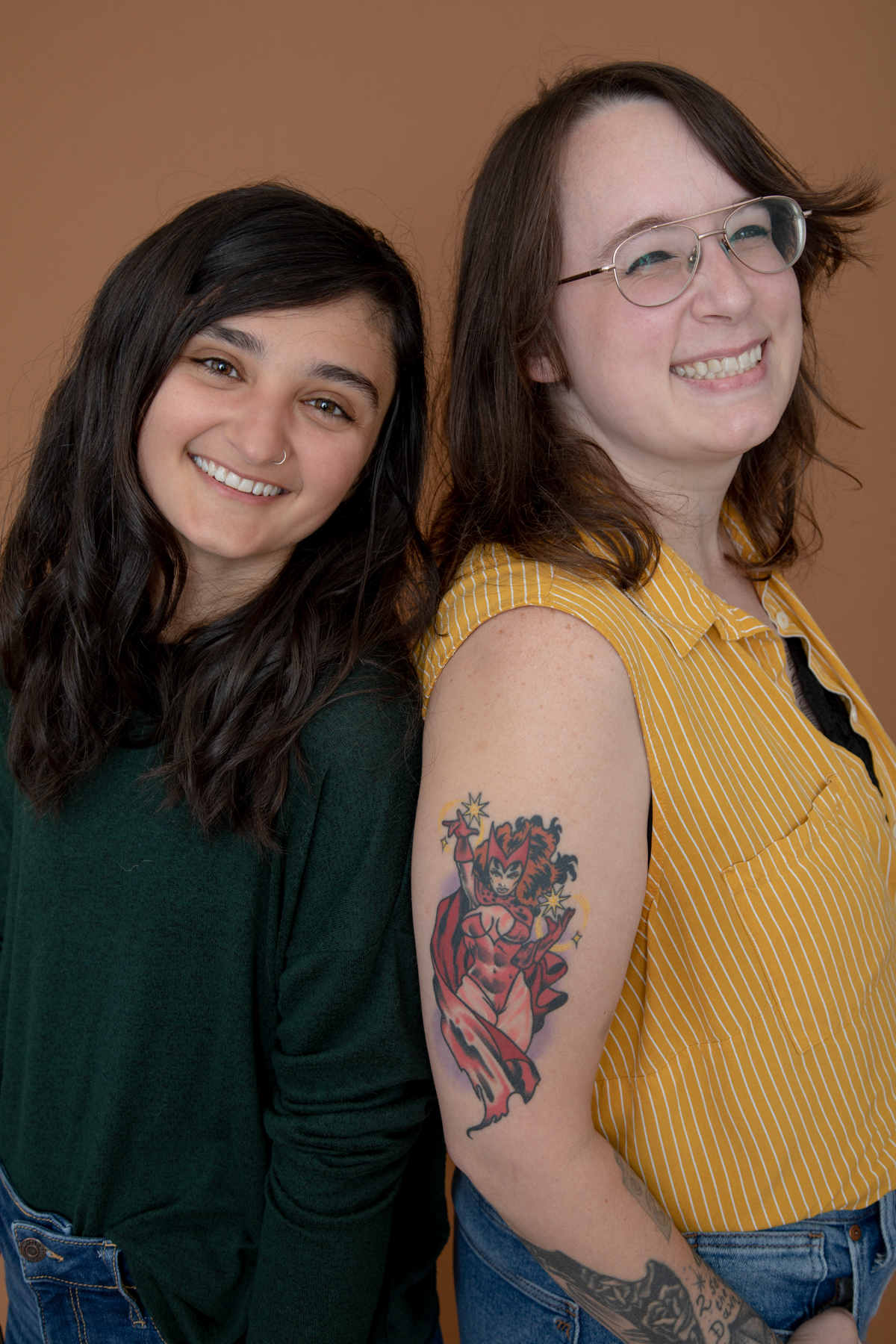
MI: It is an outlet of sorts. Especially in the library, where you have kids from after school who have nothing to do. Why not make a zine? I know if I were a kid, I would have really thrived if I had that kind of teaching because I was a little punk. It would have been nice to have had a zine workshop to show me that I can put all my ideas in there, and make my own propaganda, and rule the world at ten.
KS: I was a punk too, and it was a big deal to make zines to talk about your scene. I grew up with a lot of kids that came from broken homes or tough backgrounds, and our common thing that helped us get through that stuff was zines and shows. I want people to have access to that.
GP: Could you tell me more about the Gluestick festival last month?
KS: It was fun. It was crazy. I don’t know if it was our biggest, but it was pretty close. We started out as Gluestick Zine Fest in 2016. We did that for three years. We tried to incorporate music a little bit more and we changed the name to Three Hole Punch Arts and Music Festival. We did that for four years. Now we’re back to Gluestick Zine Fest because everybody called it Gluestick anyways, and the name is just really catchy. This last festival we had around forty-three tablers from Indy, and different places. There were people that made zines, and there were a couple people that made art toys there. There were also illustrators. The library was there. Sly Badges, which is an anarchist distro type of thing, had a bunch of zines and actual books. It’s a good mix of people. They came from everywhere—Lafayette, Chicago, tons of places in Ohio, Grand Rapids, Michigan, all over the Midwest. The goal with that is to bring people together. We always joke that the event runs itself. After we set up the tables and stuff, we don’t really direct it. People just hang out and it’s always really successful.
MI: The hardest part is setting up and figuring out where to put people, but then I feel like everyone who tables is amazing. They really get it, it’s a DIY event. It’s very much geared towards DIY. They’re really down to help in any way they can.
KS: Kind of cool that everybody pitches in and that’s cute, you know? Everybody feels like they have a stake in it. That’s what I want.
GP: Are there any more events coming up?
KS: We have a monthly poetry open mic and we also do our workshop, which is the third Wednesday of every month. This month, it’s going to be origami.
MI: The teacher makes origami that you can put in a zine, so it almost looks like a little pop-up book. He’s really cool, his name is Logan and he is phenomenal.
KS: We’re looking forward to doing some origami, and if people want to work on that, they can. These are very low-key events, if you don’t want to work on the same thing, that’s fine. If you want to come to only listen to poetry and not read poetry, that’s cool too. All of our events are no pressure events.

